Trees, Tear Gas, and Pre-Staged Milk — A Night at the Brooklyn Center Protests
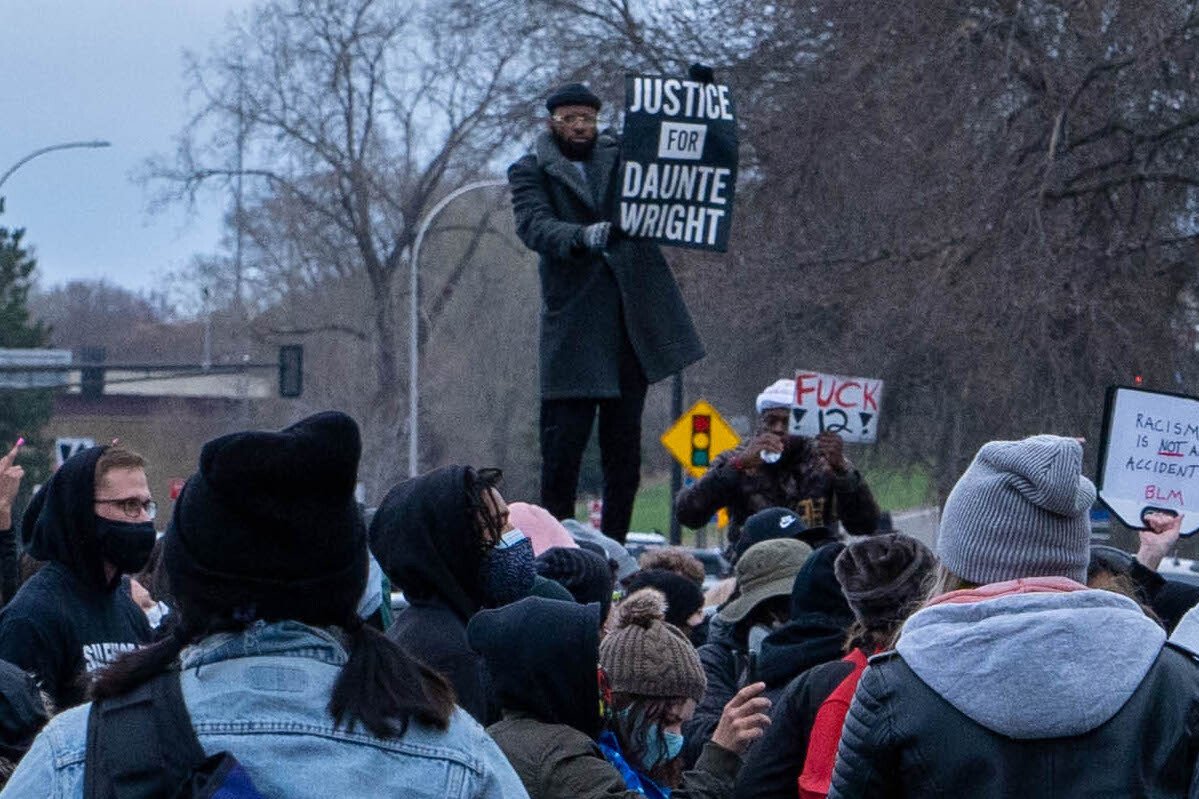
Crowds gather outside the Brooklyn Center, Minn., police headquarters Monday April 12, 2021, prior to a 7 p.m. curfew to protest the killing of 20-year-old Daunte Wright. Photo by Joshua Skovlund/Coffee or Die Magazine.
A line of tall, full oak trees are a welcoming splash of nature outside the Brooklyn Center police headquarters, each standing perhaps 30 feet tall over the well-kept lawn outside the building’s main entrance. But Monday night, that open lawn was set behind cement barriers and tall fencing and police who work inside the headquarters enlisted those same trees in defense of the building. As a crowd of protesters grew more aggressive and ignored orders to disperse after a curfew, police shot pepper-spray projectiles into the tree’s high limbs. The rounds shattered, throwing their contents over a wide swath of the crowd below. Wind carried some particles even farther.
It was one of several well-practiced tactics that Coffee or Die Magazine observed police using outside the Brooklyn Center police headquarters Monday as crowds clashed with police — the day after an officer shot 20-year-old Daunte Wright Sunday afternoon.
The shooting hit this suburb of Minneapolis hard, after it had already seen protests in the wake of the George Floyd killing change the face of the region in the last year. Protests erupted within hours of Wright’s shooting, and within 48 hours, the town manager, chief of police, and the officer who shot Wright — Kimberly Potter, a 26-year-veteran of the force — had all resigned.
Monday started peacefully at the Brooklyn Center headquarters, but by midafternoon, a nervous energy began to build as a 7 p.m. curfew announced by Gov. Tim Walz loomed. Curfews have been effective in curtailing violence around protests in recent months but have also acted as a de facto start time for small violent elements among protest crowds to resist dispersing.
The Coffee or Die team arrived at the station at 4 p.m. to find a crowd of about 200 gathering on North Humboldt Avenue, which was closed in both directions. Workers were finishing installing fences across the front of the headquarters, just inside the two largest trees on the building’s front lawn.
We immediately heard loud booms — of hip-hop music blaring from speakers that some people were carrying and from cars parked nearby. Though the crowd was active and growing, the atmosphere was peaceful and perhaps even positive as groups chanted and congregated. Several leaders holding megaphones in the crowd encouraged chants demanding justice. However, as the evening came on, the mood changed, from active protest to nervous energy. Calls for justice changed to more aggressive demands.
Supplies and gear began to show up. Gallons of milk were lined up on a lawn, ready to use as a neutralizer for tear gas agents. New protesters began to arrive, including self-styled medics carrying full backpacks with red crosses stitched or drawn on them. Within a few hours, I and my fellow Coffee or Die cameraman, Ethan Nagel, would be desperately upending one of those jugs into our faces, trying to cool the chemical burning from police-fired gas.
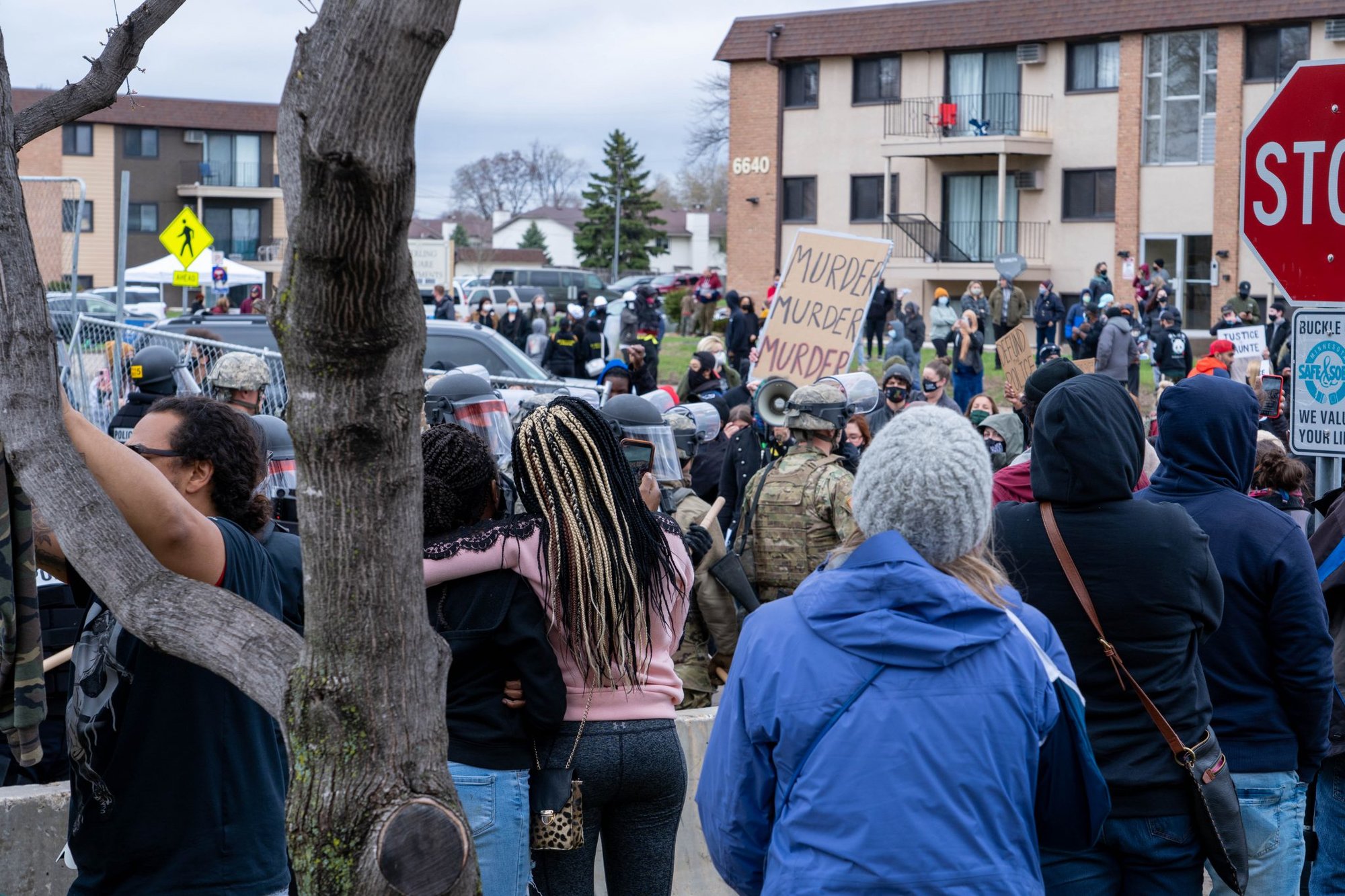
Troublingly, some groups began to arrive with improvised shields, which appeared to be 55-gallon drums cut in half and affixed with rope handles. I worried that the group might include a particularly violent group of sovereign citizens that had used protests to clash with police in the past.
As 6 p.m. arrived, the crowd had shifted. Diverse, peaceful groups were still active, but others, dressed in dark, padded clothes and made up of more white people, were now arriving. Many wore goggles. Several had heavy-duty gas masks with filters.
The groups, mostly white men, distributed shields and seemed to know one another, smiling and talking like old comrades as they met in the crowd.
A man in shorts tried to ignite a cup full of unidentifiable liquid against the fences. It smoked for several minutes but did not ignite.
The tone of the signs held by protesters changed, too. While earlier crowds bore signs with sayings such as “Justice for Daunte Wright,” late-arriving protesters had signs with messages like “ACAB” — for All Cops Are Bastards.
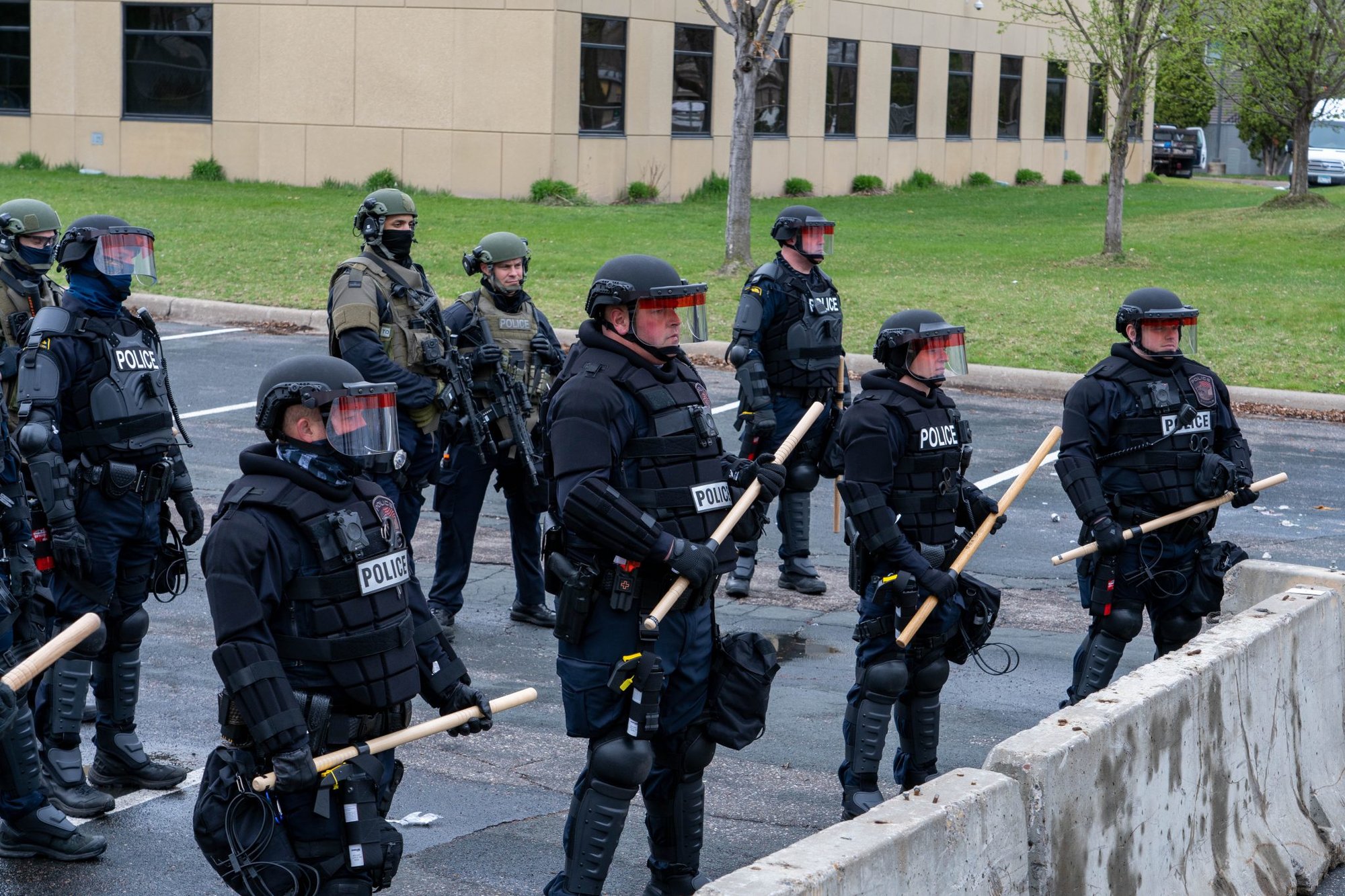
Unlike the hours before protests last summer in nearby Minneapolis, police appeared ready Monday. At least 200 were present, with the wide range of police departments called in for the night visible in their distinctive uniforms. Local police wore blue riot gear; sheriff’s officers were dressed in olive-drab green with tactical gear; and state police had on yellow reflective vests over body armor.
At 7 p.m., as day began to fade to night, police began announcing that the curfew was in effect and protesters should disperse. Few did, and an uneasy standoff ensued, lasting about an hour. As night fell, the crowd turned from being a passionate, peaceful protest to something more confrontational. Some Black protesters yelled that white protesters needed to be up front, near the police fences, to “prove” their commitment to the protests.
Then, on a prearranged signal, perhaps 100 State Police in their matching, brightly reflective jackets emerged in a line on the south side of the building, cutting off North Humboldt Avenue. Shoulder to shoulder, the officers formed a wall that blocked off escape to the south of the police station.
Soon after, the protest tipped into violence. The crowd picked up its pace of throwing rocks and bottles and flashing bright green lasers at officers’ faces. Police responded with flash-bang grenades, bright lights, and chemicals, including the tree-impacted pepper-spray rounds and tear gas canisters.
As the crowd grabbed and shook the perimeter fences, gas canisters landed among the protesters. Several people dressed in all black, with gas masks and various other equipment, grabbed the canisters and threw them back over the fence or attempted to.
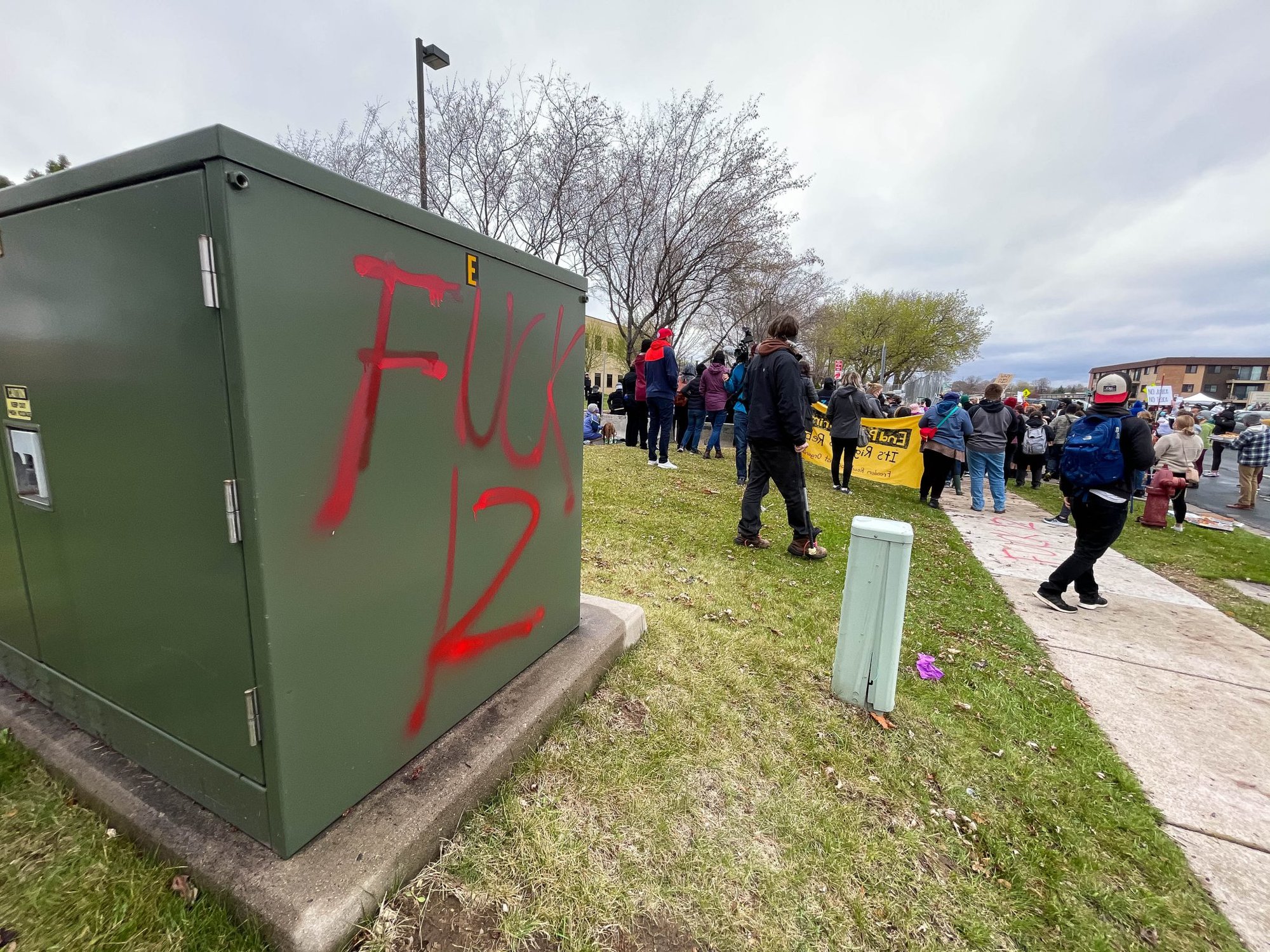
This is where my night ended.
As a canister landed just feet from me, I felt the sting in my eyes and throat and turned immediately to move away from it. When I was in the Army, I experienced tear gas during training. The gas put out by that can was much stronger and instilled a different kind of burn and irritation in my lungs. I instantly turned from the canister on my left to move upwind — and walked directly into the cloud from a canister on my right. Law enforcement was now broadcasting that everyone, members of the media or not, would be arrested if they chose to stay in the area.
My eyes were watering and burning, my nose running, and I couldn’t stop the coughing. This was not an itch-in-my-throat cough but an almost eviscerating cough from my gut.
Almost blinded, my cameraman and I stumbled toward the rear of the crowd. A woman I couldn’t see took my arm and asked, “Do you guys need milk?” My cameraman said he would give it a shot and poured the half gallon over his face. With relief, he said that it worked. I immediately followed, eager to clear out my eyes. The pain in my eyes was drastically reduced, but the irritation in my lungs continued for another two days, gradually waning.
Even through the gas, some elements of the crowd charged forward, including many of those with shields and gas masks. But by 10 p.m. the crowd was essentially gone. Police reported 40 arrests Monday.
Senior editor Matt White contributed to this story.
Read Next:
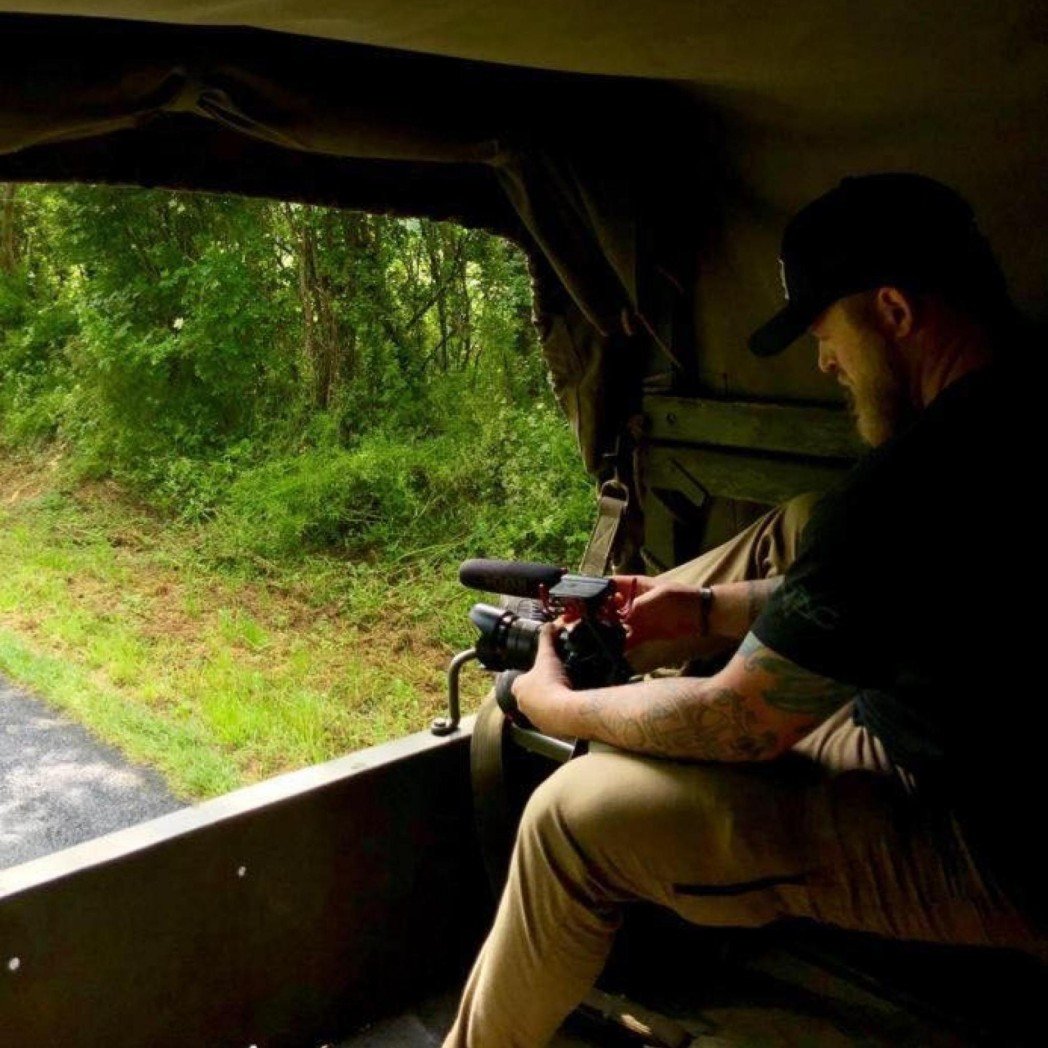
Joshua Skovlund is a former staff writer for Coffee or Die. He covered the 75th anniversary of D-Day in France, multinational military exercises in Germany, and civil unrest during the 2020 riots in Minneapolis. Born and raised in small-town South Dakota, he grew up playing football and soccer before serving as a forward observer in the US Army. After leaving the service, he worked as a personal trainer while earning his paramedic license. After five years as in paramedicine, he transitioned to a career in multimedia journalism. Joshua is married with two children.
BRCC and Bad Moon Print Press team up for an exclusive, limited-edition T-shirt design!
BRCC partners with Team Room Design for an exclusive T-shirt release!
Thirty Seconds Out has partnered with BRCC for an exclusive shirt design invoking the God of Winter.
Lucas O'Hara of Grizzly Forge has teamed up with BRCC for a badass, exclusive Shirt Club T-shirt design featuring his most popular knife and tiomahawk.
Coffee or Die sits down with one of the graphic designers behind Black Rifle Coffee's signature look and vibe.
Biden will award the Medal of Honor to a Vietnam War Army helicopter pilot who risked his life to save a reconnaissance team from almost certain death.
Ever wonder how much Jack Mandaville would f*ck sh*t up if he went back in time? The American Revolution didn't even see him coming.
A nearly 200-year-old West Point time capsule that at first appeared to yield little more than dust contains hidden treasure, the US Military Academy said.












